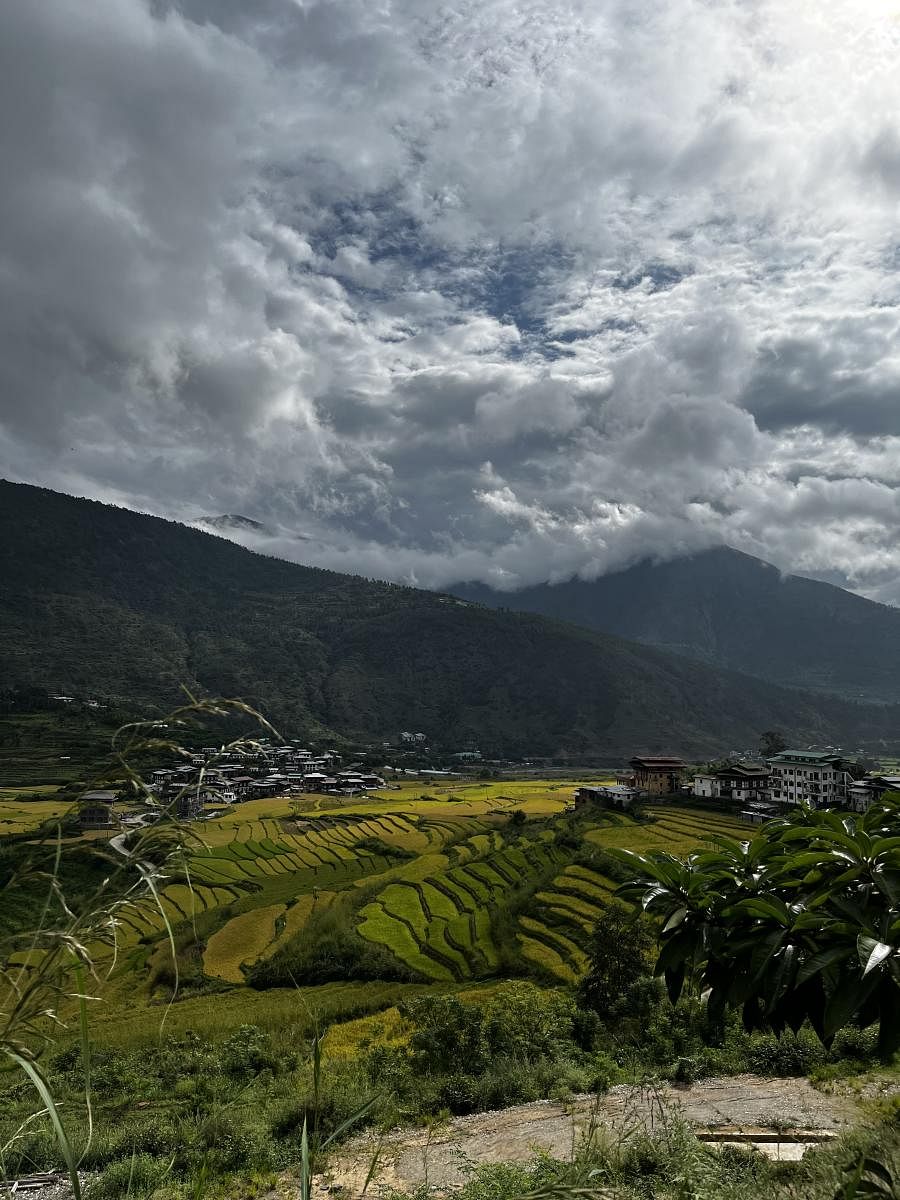On the 'happiness' trail in Bhutan



It’s true that some of the world’s most gorgeous scenery is off-limits to all but those who lace up their boots and head into the wild. This is what I did after landing in Bhutan to walk the Trans Bhutan Trail after the country finally reopened for tourism on September 23.
The trail history
For hundreds of years, the Trans Bhutan Trail was an important trade, pilgrimage and communication route. In fact, until the 1906s when the national highway was constructed, it was the only way to travel across the country. For the first time in 60 years, the kingdom of Bhutan has opened this sacred hiking trail that traverses from Haa in the west of Bhutan to Trashigang in the east (near the Tibet border) and spans 403 km.
Hiking the entire trail takes about a month, but because it’s broken into sections you can choose the length of your hike. Day hike or multi-day journey, solo or with a group — there is something for every trekker. I chose a three-hour trek from Dochula Pass to Thingleygang to dip my toes into the trail. This section of the trail is considered one of the most beautiful, coursing through rhododendron forests and soaring trees whispering the ancient secrets of this mystical region. The colourful prayer flags tied to the trees add a spiritual dimension while the mighty Himalayas behind the veil of thick mists look like a spectacular painting. Though the hike isn’t technically difficult, I was soon breathless from the ascent and descent. After three hours and 30 minutes, a sloping pathway takes us to a small group of village houses built in the distinct Bhutanese style featuring carved timber windowpanes and wood-lined arched roofs. This is also the spot where our car for the onward journey is parked. The pleasantly exhausting day ends at a campsite with other hikers eager to swap stories and toast the day’s accomplishments.
A vacation beyond walks
The Trans Bhutan Trail is not just a series of endless treks but also involves Bhutan’s famous sights along the way. In Punakha, a visit to the Chimi Lhakhang (also known as the Fertility Temple) is on the itinerary. This revered place of magic and miracles is where women struggling to conceive are made to carry a wooden phallus around the temple three times. Then there is the Punakha Dzong arguably the most beautiful dzong in the country and one of the top three sights in Bhutan, the two others being the Tiger Nest Monastery and Dochula Pass. Access to the dzong is across through a suspension bridge and the entry is via steep wooden stairs. The massive gold statues of the Buddha, exceptional murals and courtyards studded with bodhi trees make this dzong one of the most impressive in Bhutan. Enthused by the success of my maiden trek in Bhutan, I attempted another one along the Trans Bhutan Trail — Simtokha to Hongtsho.
This one was epic mainly because of the scenery and the remoteness of the trek which was absolutely extraordinary. The well-marked trail is full of enchantment with plank walkways and bridges that cross swampy bogs and summer streams. But the thrills don’t come easy. The path is rocky, uneven and frequently steep. But giddying views of mystical streams, sculpted mountains and deep and silent lakes make it all worth the extreme fatigue that follows the next day. There’s a definite ‘Lost World’ feel to this hike full of character. The reward at the end of this four-hour trek is a Bhutanese picnic lunch in an apple orchard.
Food & accommodation
Scrumptious Bhutanese delicacies are a major highlight of the trail. Expect lots of ema datsi (which literally means chilli and cheese) with every meal and steamed and fried momos with Bhutanese chilli sauce ezay. Rice is omnipresent as also puta or buckwheat noodles. Puffed red rice called zaow dunked in savoury butter tea
is a national pastime. Stay options along the trail include campsites, heritage farmhouses, rural homestays and comfortable four-star hotels. No matter which part of the trail you choose to explore, you’re in for head-spinning views and tranquillity. Even the drive in between the treks is littered with rainbows! So dust off those hiking boots and hit the trail.
Bhutan fact file
Bhutan has only one airport, located in Paro. Two airlines Bhutan Airlines and Druk Air fly to Bhutan from Kolkata, Delhi and Mumbai in India.
Indians visiting Bhutan will have to pay a Sustainable Development Fee (SDF) of Rs 1200 (US$15) per person per day. A pre-arranged guide, hotel accommodation and permits are essential. This can be arranged through a Bhutanese agent or independently.
The best months to visit Bhutan are March/April — for warm temperatures and stunning rhododendron blooms — and October/November — for clear Himalayan views and the most popular festivals.
There are various itineraries and packages to get a taste of the trail which starts from a week to a month to explore the entire length of the trail (403 km). Prices depend on the length of stay and accommodation chosen.
Deccan Herald is on WhatsApp Channels| Join now for Breaking News & Editor's Picks